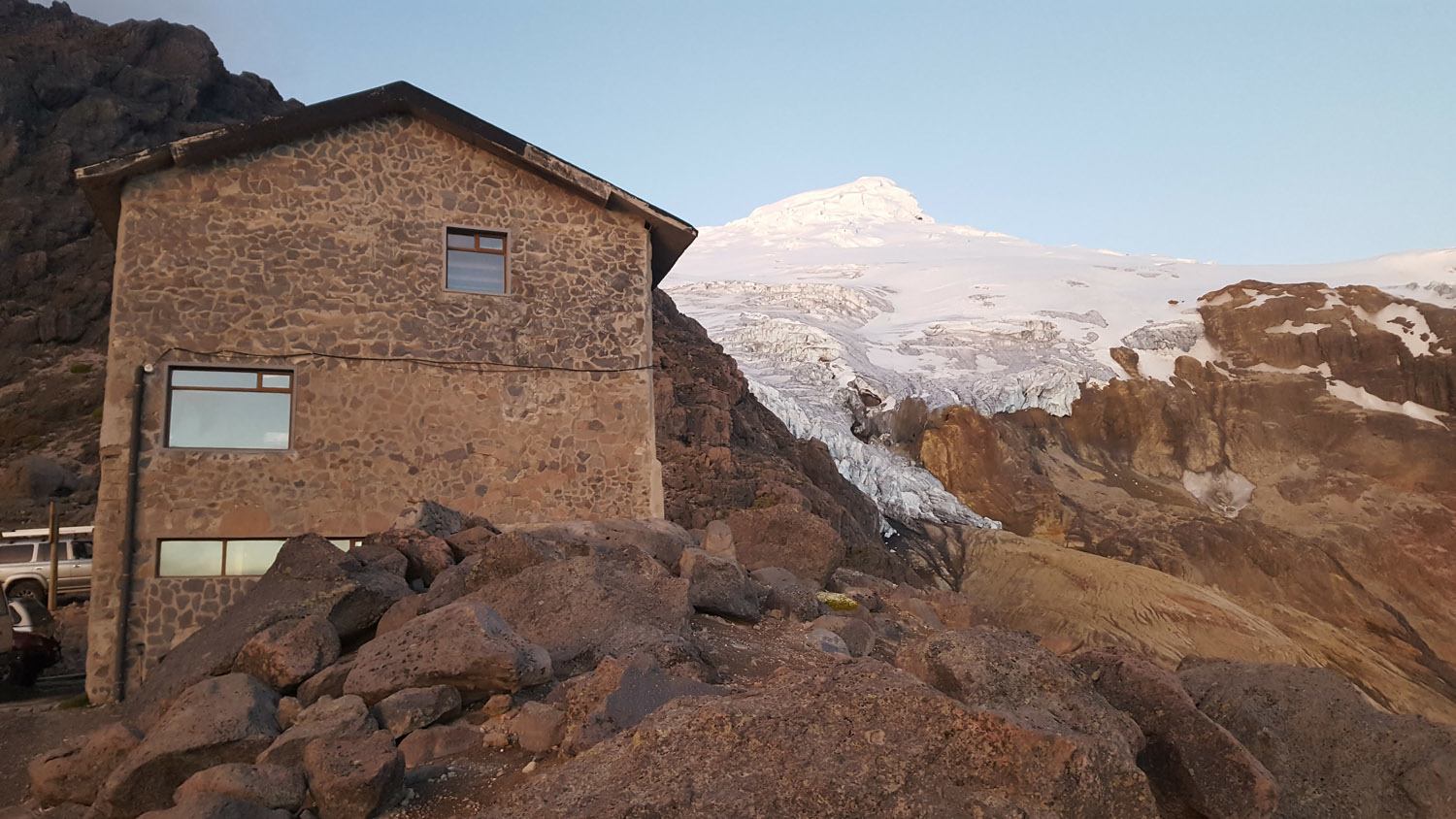[dropcap style=’box’]A[/dropcap]fter four hours of climbing, the wind and rain had only gotten worse. I specifically remember wondering if my buff had frozen to my forehead because of the way the cold wind cut through the thin, wet material. I also remember when Darby realized that ‘waterproof’ is open to interpretation in the realm of outdoor clothing.
There is a bottomless list of reasons to turn around on any climbing expedition, let alone a mountain as big as Volcan Cayambe. Set high in the Andes mountains just outside of Quito, Ecuador, Cayambe is a common mountaineering objective for our College Semester Program and other courses with a mountaineering focus. During my semester as a student in the Spring of 2016, attempting to summit Cayambe felt like a culmination of our hard work throughout the semester. There was a good chance that this was a once in a lifetime opportunity for us students, and we were willing to give our full effort to this mountain. But we never got the chance.

Our legs felt strong. We somehow still had energy, and although we were well over 17,000ft by this point, we still weren’t experiencing any altitude sickness. We felt GOOD, but we still had to turn around because we were behind schedule, conditions were becoming unstable, and there was a very slim chance that we would reach the summit safely. Our dreams of the summit would have to wait.
I think everyone with a difficult turnaround story will argue theirs is the most emotionally excruciating. Our biggest complaint in this instance was that it was at no fault of our own we had to turn around; physically we felt more than capable, but the poor weather conditions ultimately shut us down. While the disappointment was substantial, I’ve now come to understand what a valuable lesson it was to me and my classmates to have to turn around on our first big mountain attempt. Knowing when to turn around on a climb can seem straight forward when looking at the situation objectively from the outside, but when months of training, personal investment and sacrifice have been put in to get to that point, the lines blur to a surprising degree.

It seems to me it was extra valuable that this was my first big mountaineering experience, because I learned how to deal with this type of disappointment right away. I learned that sometimes, no matter how hard you are willing to work, things still might not go your way. This didn’t mean that I would stop trying. In fact, it helped ignite a passion that, when conditions are in my favor, help take my determination to the next level. This experience on Cayambe changed my perspective and taught me to always work hard to get into position to accomplish my goals.
This story may be even more relevant when applied to normal life. Not everyone has been forced off of a mountain because of a storm, but everyone has experienced disappointment. When the conditions are right, a mountain climber must be willing to give their full effort. Just the same, a student has to be fully prepared when they show up for an exam. Even if they failed the last one, to let that affect the way they approach their next exam would be silly. The metaphor isn’t perfect, but the point is pretty straightforward: moving on from disappointment isn’t always easy, but it is almost always necessary.
Moving on from disappointment isn’t always easy, but it is almost always necessary.
Another lesson we can learn from turning around in the mountains is the value of saying no. One of the first lessons on mountaineering safety is about the importance of knowing when to turn around. Saying no is valuable in many aspects of life, from relationships to work to social situations. One relevant example is when our lives become overscheduled and overbooked. Social media can lead us to believe that the more we do, see, and experience, the better our lives will be. Now, don’t get me wrong, I’m not knocking the value of life experiences. But there is also value to be found in taking a step back from the busyness. For instance, saying no to a big group social activity might allow for the opportunity to spend a quiet afternoon with one close friend. Or in a work setting, saying no to an additional project might result in less output, but at a much higher quality. Overall, taking a step back by saying no once in a while allows us to experience everything a little more fully.
In the end, our experience on Cayambe didn’t deter any of us students from mountaineering in the future. In fact, we’ve all returned to the mountains time and again, ready to weather the storm. Saying no one time taught us valuable life lessons and made it all the sweeter when we finally did summit our own respective mountain peaks.


